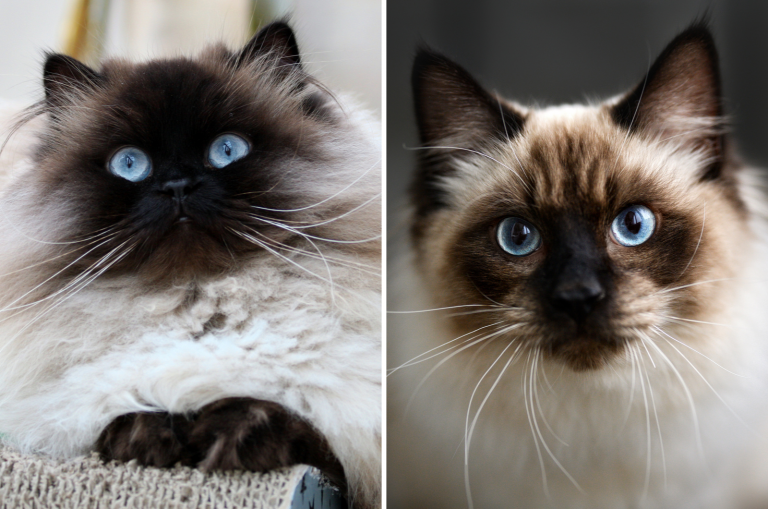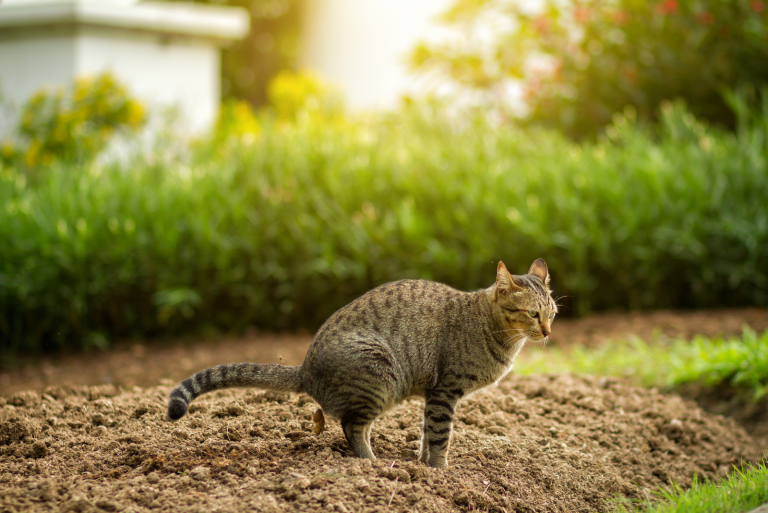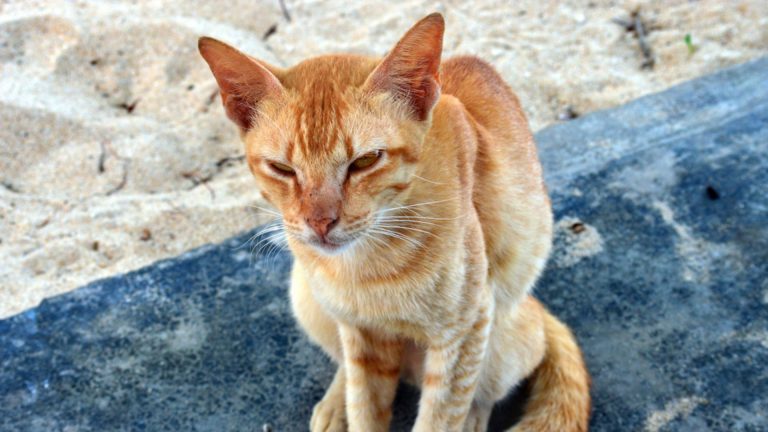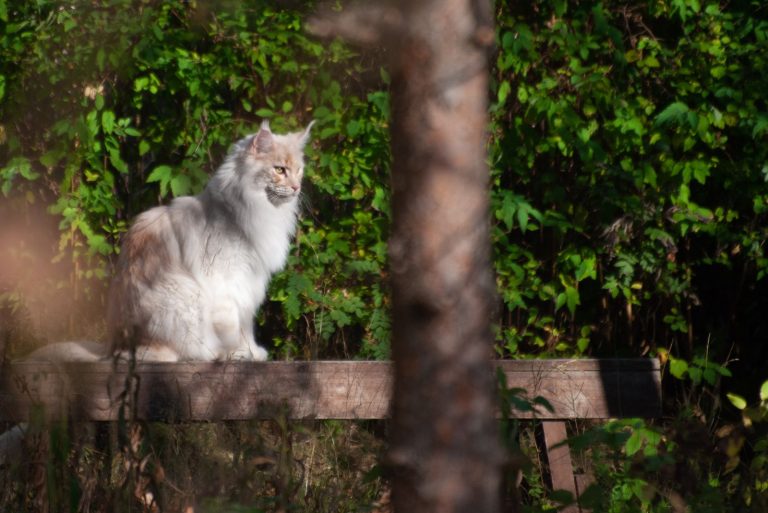21 Cat Breeds You Should Avoid If You’re Suffering From Severe Allergies
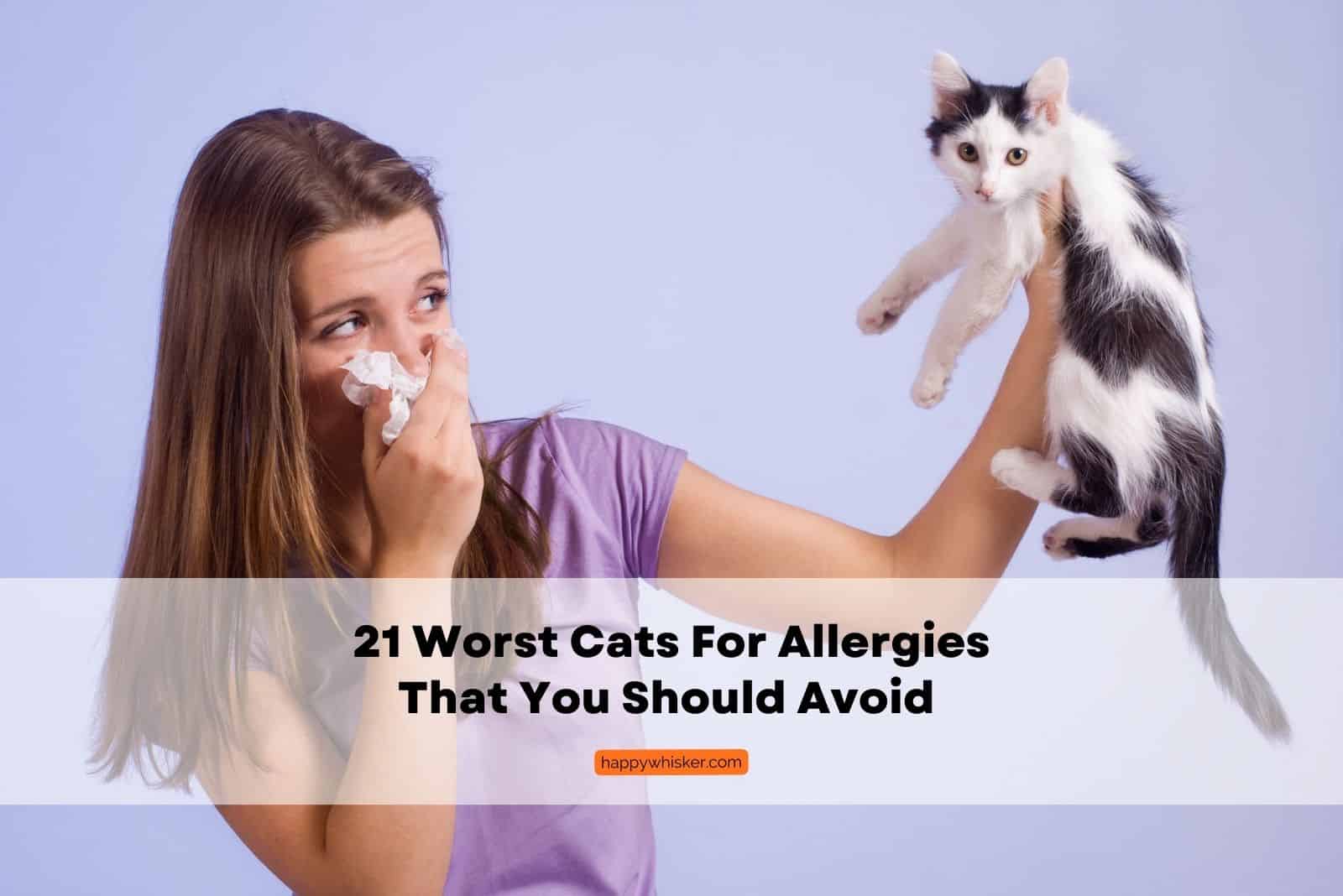
Is there a worse thing than being a cat lover and being allergic to cats? I don’t think so!
But, hey! Don’t be disappointed yet, as there’s still a chance for you to become a cat parent without experiencing allergy symptoms such as coughing, sneezing, skin irritations, watery eyes, and similar.
Even though there’s no such thing as a hypoallergenic cat, luckily there are cats that produce fewer allergens making them a safer option for allergy sufferers.
But first, check out some of the worst cats for allergies that should be avoided at all costs.
The List Of Worst Cats For Allergies
Here’s the list of cats you should avoid if you’re an allergy sufferer. If you want to learn what makes them non-hypoallergenic or any similar information, then just keep reading the article.
Unfortunately, if you come across your favorite cat breed on this list of the worst cats for allergies, maybe it would be best to replace it with some other breed that you can find at the end of the article, that is a safer option for allergy sufferers.
| Worst cats for allergies | ||
|---|---|---|
| Maine Coon | Birman cat | The Napoleon cat |
| Norwegian Forest cat | British Longhair cat | York Chocolate cat |
| Persian | Ragamuffin | Chartreux cat |
| Oriental Longhair cat | Munchkin | Tonkinese cat |
| Himalayan | Turkish Van | American Polydactyl |
| Exotic Shorthair cat | Scottish Fold cat | Longhaired Manx |
| Toyger | Turkish Angora | Kurilian Bobtail |
It’s not necessarily true that longhaired cats cause more allergy issues than shorthaired cats because it’s not the hair that causes an allergic reaction. In fact, cats produce a protein called Fel d1 which is responsible for allergic reactions.
This protein can be found in a cat’s saliva, urine, glands, skin, and fur, thus increasing the risk of allergic reactions. So, check out the worst cats for allergies and find out why they’re on this list!
1. Maine Coon
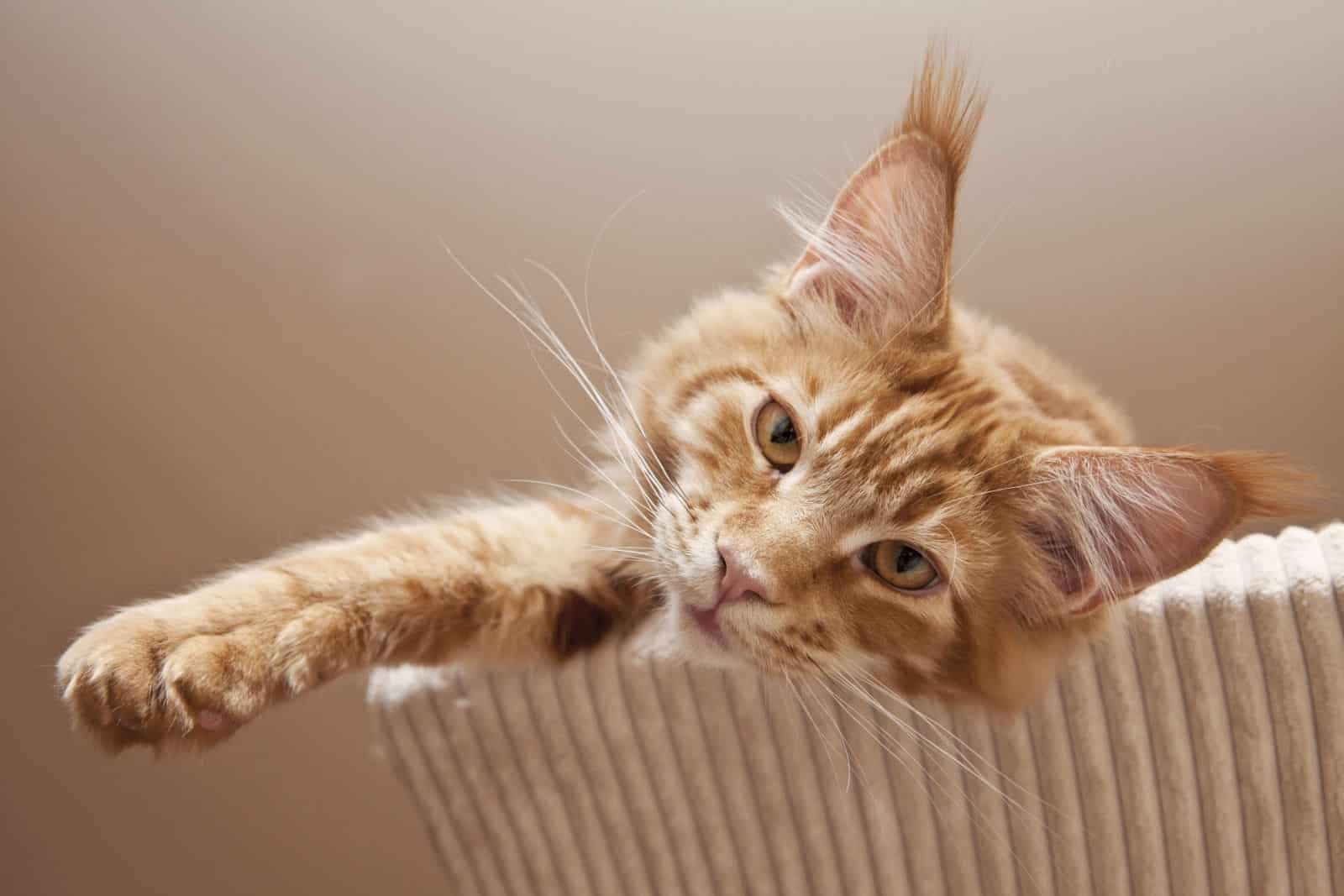
The thing with Maine Coon cats is that some consider them hypoallergenic, while others consider them non-hypoallergenic. Therefore, most people tend to say that Maine Coons are a somewhat hypoallergenic breed.
Well, if you ask me, I would advise you to avoid Maine Coons if you’re an allergy sufferer especially if you have severe allergies.
These cats don’t shed much, however, they produce a standard amount of the allergen Fel d1. So, owning such a cat, if you’re an allergy sufferer, would be quite challenging and would require high maintenance to keep your home clean and allergen-free.
2. Norwegian Forest Cat
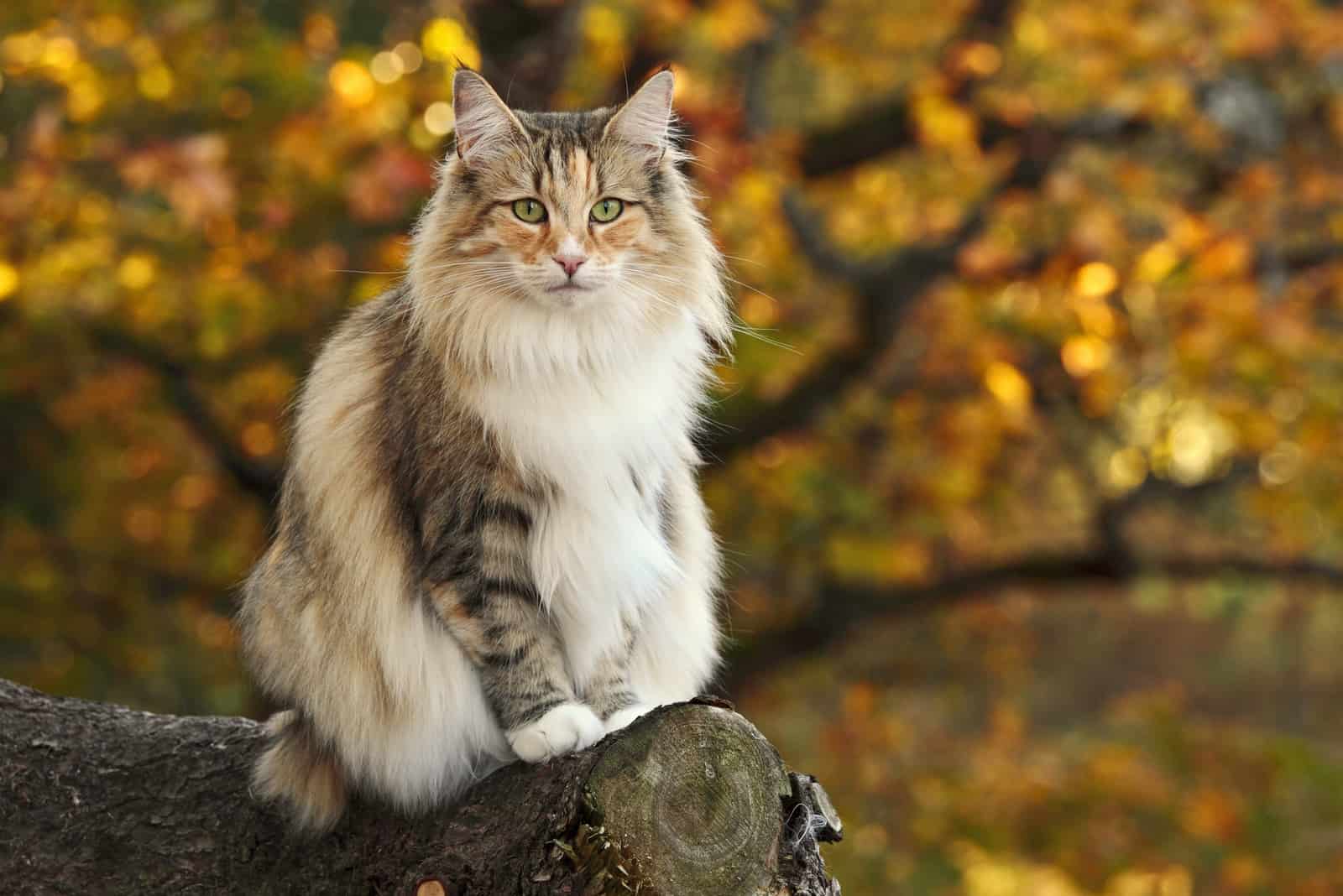
Yes, the Norwegian Forest cat breed is fascinating. But, if you’re allergic to cats it may not be that fascinating to you.
Norwegian Forest cats are perfect pets, mostly because of their friendly personality, and plus they look gorgeous. However, their long, thick fur can be high maintenance, especially during the shedding season.
Not only do these cats shed a lot, but they also produce a higher amount of the protein Fel d1 that is responsible for allergic reactions. Additionally, during shedding season, it’s very hard to keep the cat’s hair out of your environment.
They produce a lot of dander and this protein, so even though they look like a fluffy cat from your dreams, if you have allergy issues, make sure that you avoid this breed of cat.
3. Persian Cat
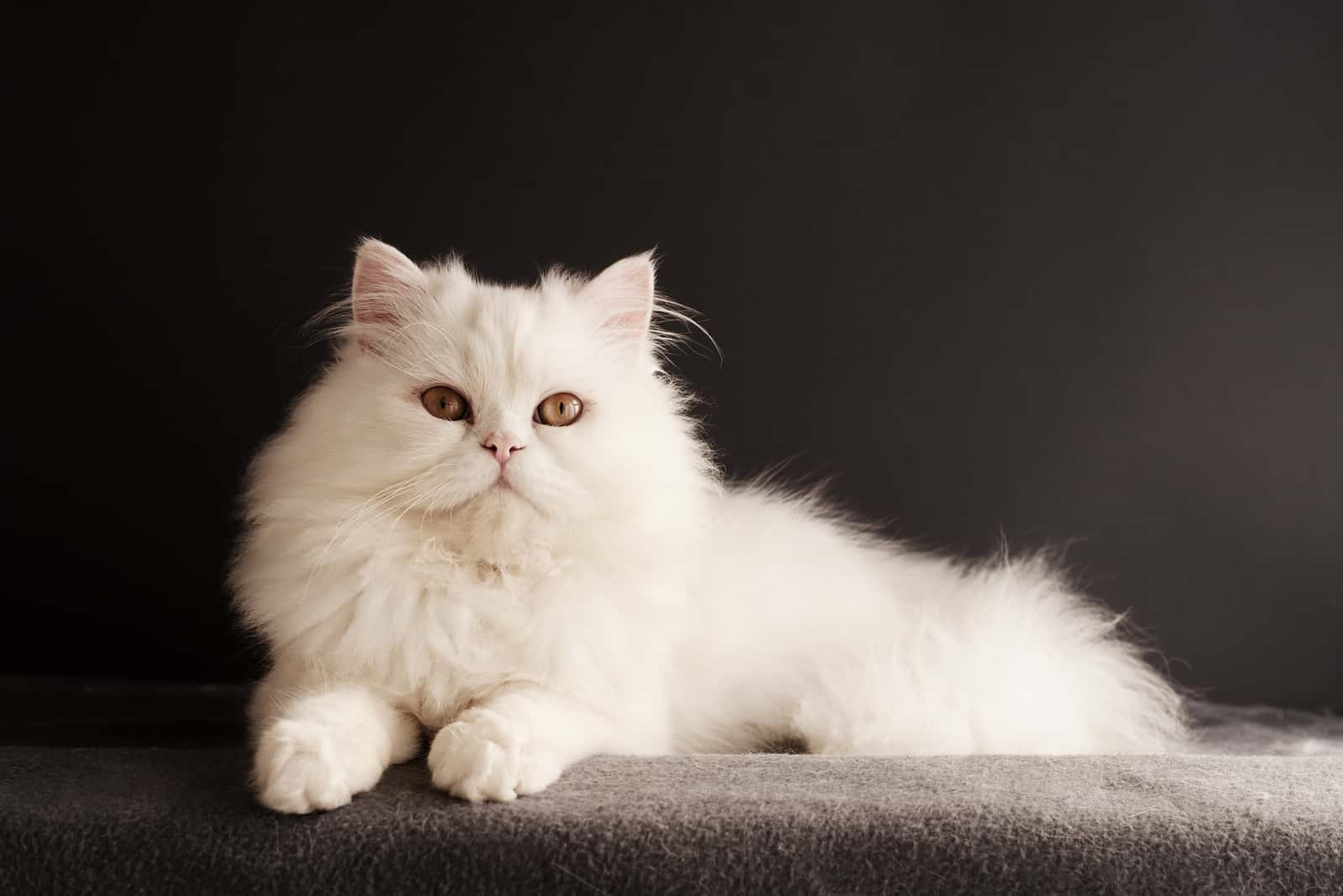
Persian cats are unusual-looking felines which makes them one of the most popular cat breeds in the world. They’re characterized by flat faces and short jaws, as well as long thick coats.
When it comes to grooming care, Persian cats only require regular brushing to keep their coat soft and smooth.
However, the reason why they’re on the list of worst cats for allergies is that they also shed huge amounts of dander along with producing higher amounts of Fel d1.
With that being said, you should give up on the idea of getting a Persian cat, and instead find a feline friend that is safer for allergy sufferers.
4. Oriental Longhair Cat

Oriental cats are felines with unusual looks. They’re characterized by smaller heads, lemon-shaped eyes, and extremely big ears. These cats have lovely personalities, but when it comes to hair type, you have two different options – the longhair or the shorthair Oriental cat.
Even though Oriental Longhair cats don’t have hair as long as Maine Coons or some other breeds, they reduce a lot of dander and leave a lot of saliva on their hair during self-grooming.
That makes this cat one of the worst cats for allergies. However, their twin, the Oriental Shorthair cat, has a very short coat that doesn’t shed a lot.
They don’t produce high amounts of the protein Fel d1 which should make them completely safe for people with mild allergies. The only thing you should do is brush them regularly to reduce the amount of dander, thus decreasing the risk of possible allergic reactions.
5. Himalayan Cat
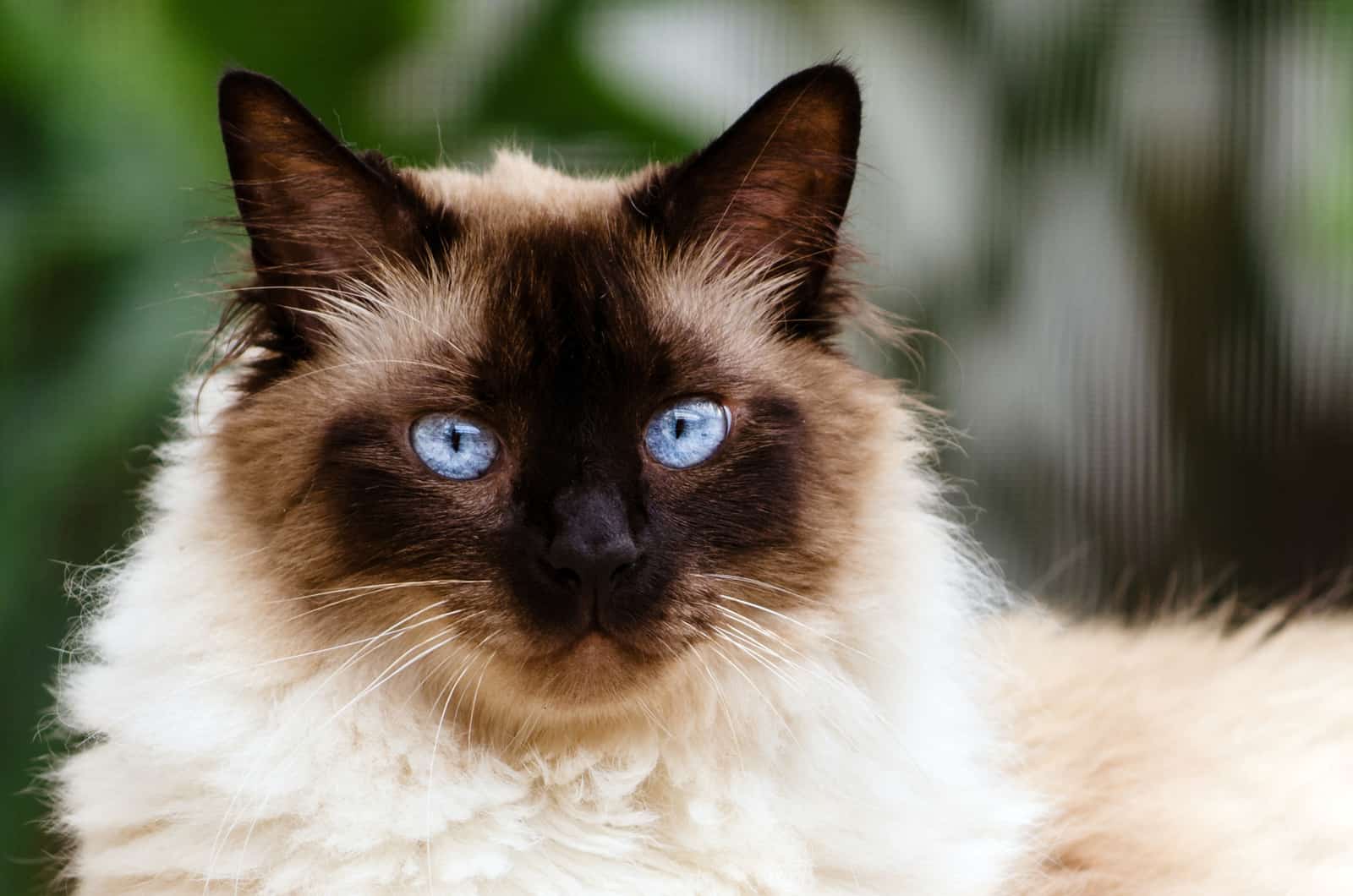
The Himalayan cat is another beautiful breed, similar to the Persian; however, it’s characterized by different coat color and pattern combinations. Just like Persians, Himalayan cats are one of the sweetest cat breeds.
However, if you have cat allergies, unfortunately, it would be best for you to avoid this breed. The main thing that makes these cats non-hypoallergenic is the fact that they have a double coat that is long and fluffy.
That means that Himalayan cats require proper and regular brushing and grooming care in order to keep their coat in a healthy condition.
Moreover, these cats produce a higher amount of Fel d1 and tend to shed a lot which is more than enough reason why you should avoid this breed as your pet if you have allergies.
6. Exotic Shorthair Cat
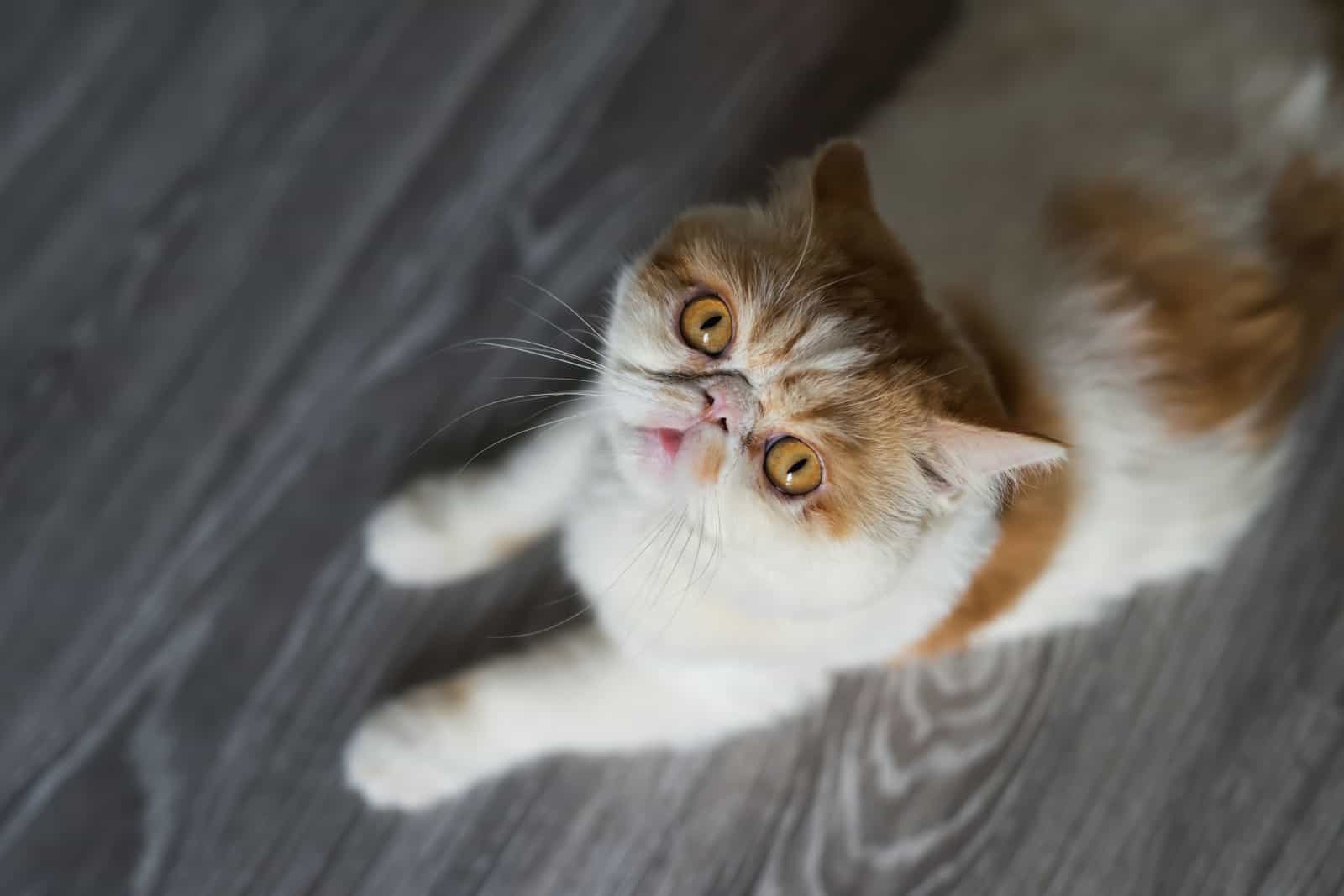
Many people may think that this cat breed is perfect for allergy sufferers but don’t let the short coat trick you! The Exotic Shorthair cat is a beautiful feline with, as the name suggests, an exotic appearance.
Their coat is short but thick which is why it requires proper grooming care. The main problem with Exotic Shorthair cats is that they produce higher amounts of Fel d1 and shed more dander.
These dander and saliva particles circulate through the air which isn’t the safest environment for people with cat allergies.
Maintaining an allergy-free environment with these cats may be mission impossible because you cannot easily eliminate tiny dander and saliva particles from the air and you cannot avoid breathing them in.
So, if you’re an allergy sufferer, please be careful and avoid adopting this breed of cat or visiting places where they live.
7. Toyger
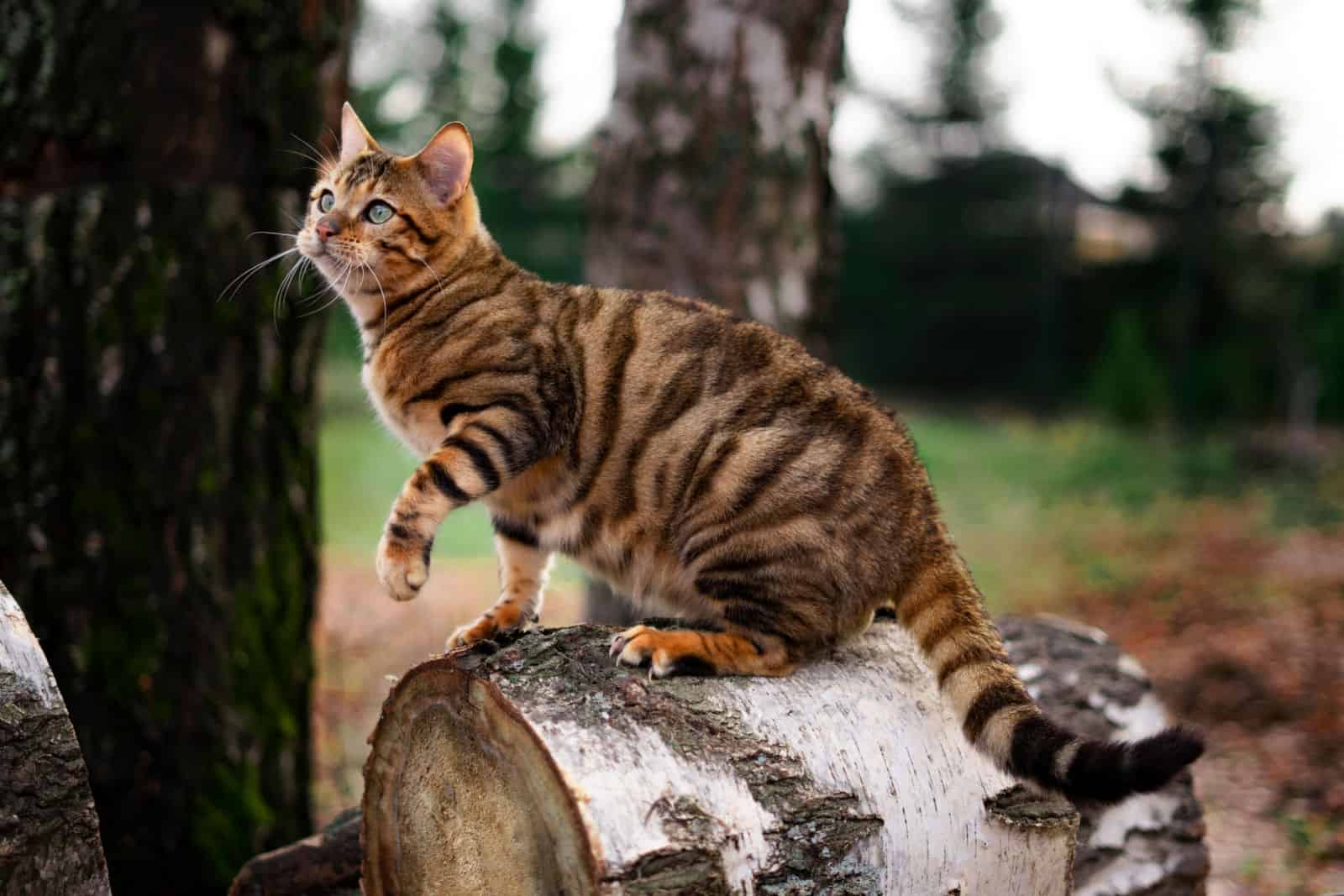
This fascinating little exotic-looking cat is called the Toyger. This breed of cat originates from breeding Bengal cats with other breeds. Still, this breed turned out great and it got its name due to its tiger-like appearance.
These miniature tiger cats are very interesting, and you might think that they’re safe for allergy sufferers, especially because they originate from Bengal cats who are thought to be hypoallergenic.
But unfortunately, that isn’t true. If you have cat allergies, it wouldn’t be the best idea to get this cat as a pet for several reasons. The main reason for that is that they tend to shed a lot and produce a higher amount of protein Fel d1 than other cat breeds.
Being near this beautiful feline is unfortunately very risky for your health condition. But, if you would like to have such an exotic cat breed, maybe you should consider adopting a Bengal cat or another similar breed.
8. Birman Cat

The Birman cat is a beautiful fluffy cat that looks like a longhair Siamese cat. But, unlike Siamese cats, these lovely kitties aren’t safe for people with cat allergies, especially because these cats simply adore cuddles.
While they don’t shed a lot, they do produce a higher amount of protein Fel d1. That may not be safe because these cats probably won’t leave you alone and will seek your attention constantly.
With them rubbing against you or cuddling and snuggling in your lap, allergens may trigger your allergies and lead to negative consequences. However, you can check alternative cat breeds that are somewhat safer for people with cat allergies.
9. British Longhair Cat
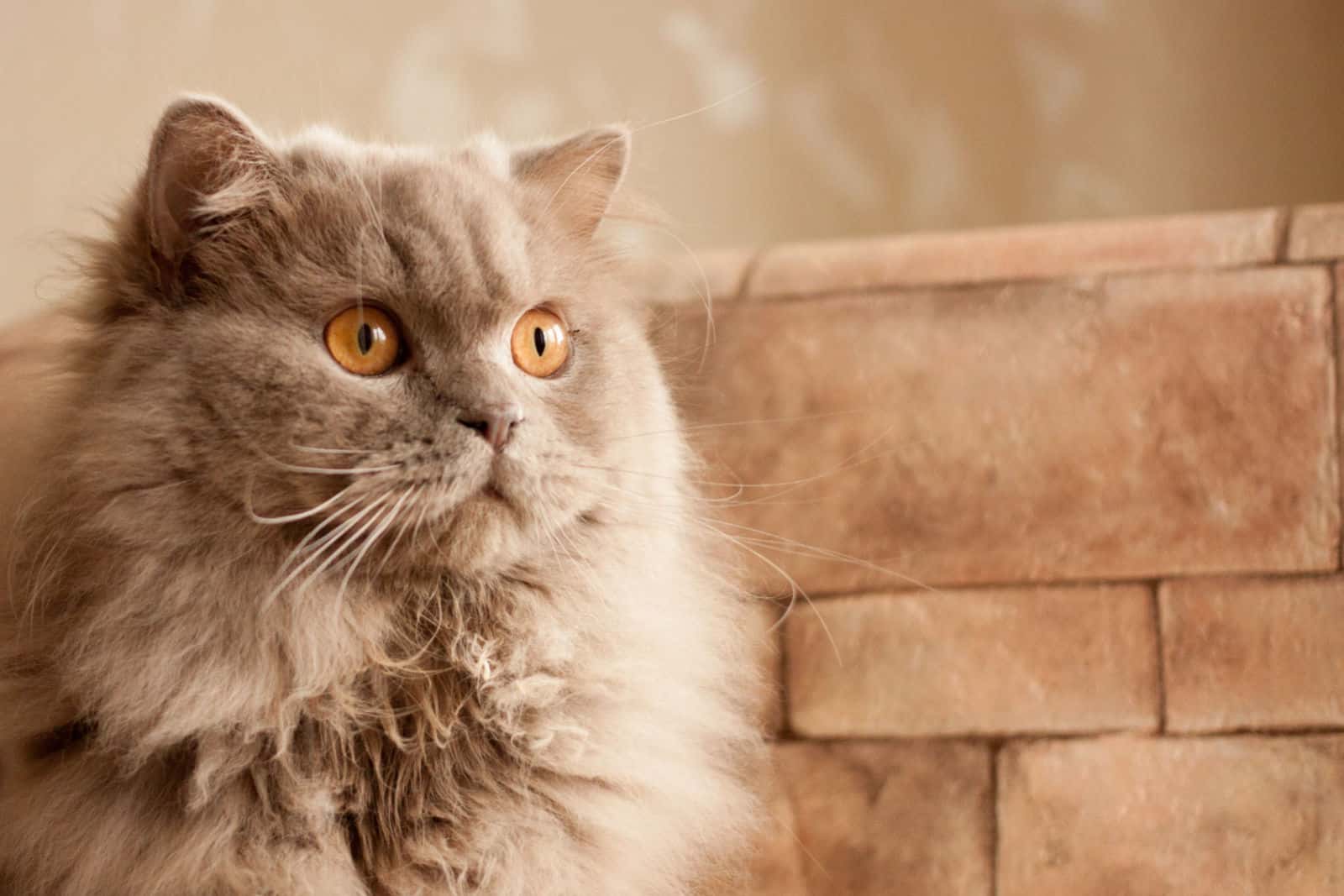
The British Longhair cat is a lovely feline with chubby cheeks that makes you want to cuddle with it all day. But, in case you’re an allergy sufferer, you should avoid cuddling or being near these cats as they may trigger your allergies.
Grooming care of these cats requires special attention which may not be easy for people with allergies. First of all, their coat sheds a lot and therefore produces dander with it.
As a result of self-grooming, a cat’s hair is often covered with its saliva which contains the protein Fel d1 that triggers allergic reactions. These cats need regular brushing in order to keep their coat in a healthy condition and prevent it from matting and tangling.
Most families choose this cat breed as their family pet because it is great with children and animals. However, if there’s anyone in your family with allergies, I recommend you don’t risk it.
10. Ragamuffin
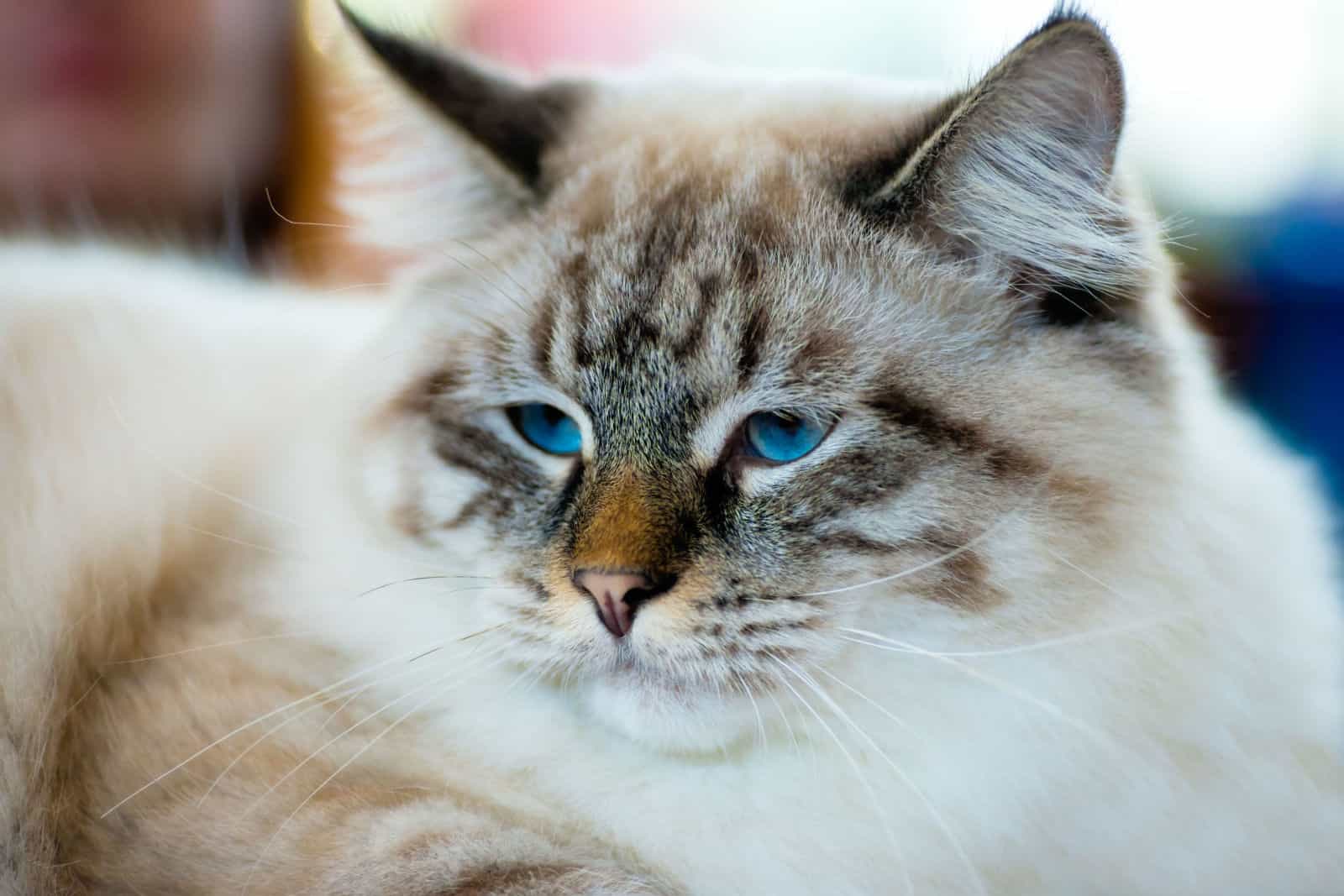
The main thing that confuses many people is how Ragamuffin cats are not hypoallergenic if they’re pretty much the same as Ragdolls. Well, there are certain differences, and it’s important to differentiate Ragamuffins and Ragdoll cats.
Ragdoll cats are considered hypoallergenic mostly because they don’t have an undercoat and therefore they shed less. On the other hand, Ragamuffin cats are also fluffy, longhaired cats with big beautiful eyes.
Just like Ragdolls, they adore human company, cuddles, snuggles, and being the center of attention. But, if you have allergies, you should avoid Ragamuffin cats as they may trigger allergies.
In fact, people with severe allergies should strictly avoid them in order to prevent negative consequences. On the other hand, if you have mild allergies, you won’t necessarily have allergic reactions to these cats, but still, it’s better to avoid such risks.
People who have these lovely cats may try reducing allergens through regular grooming, but that is more difficult and complicated than it sounds.
11. Munchkin
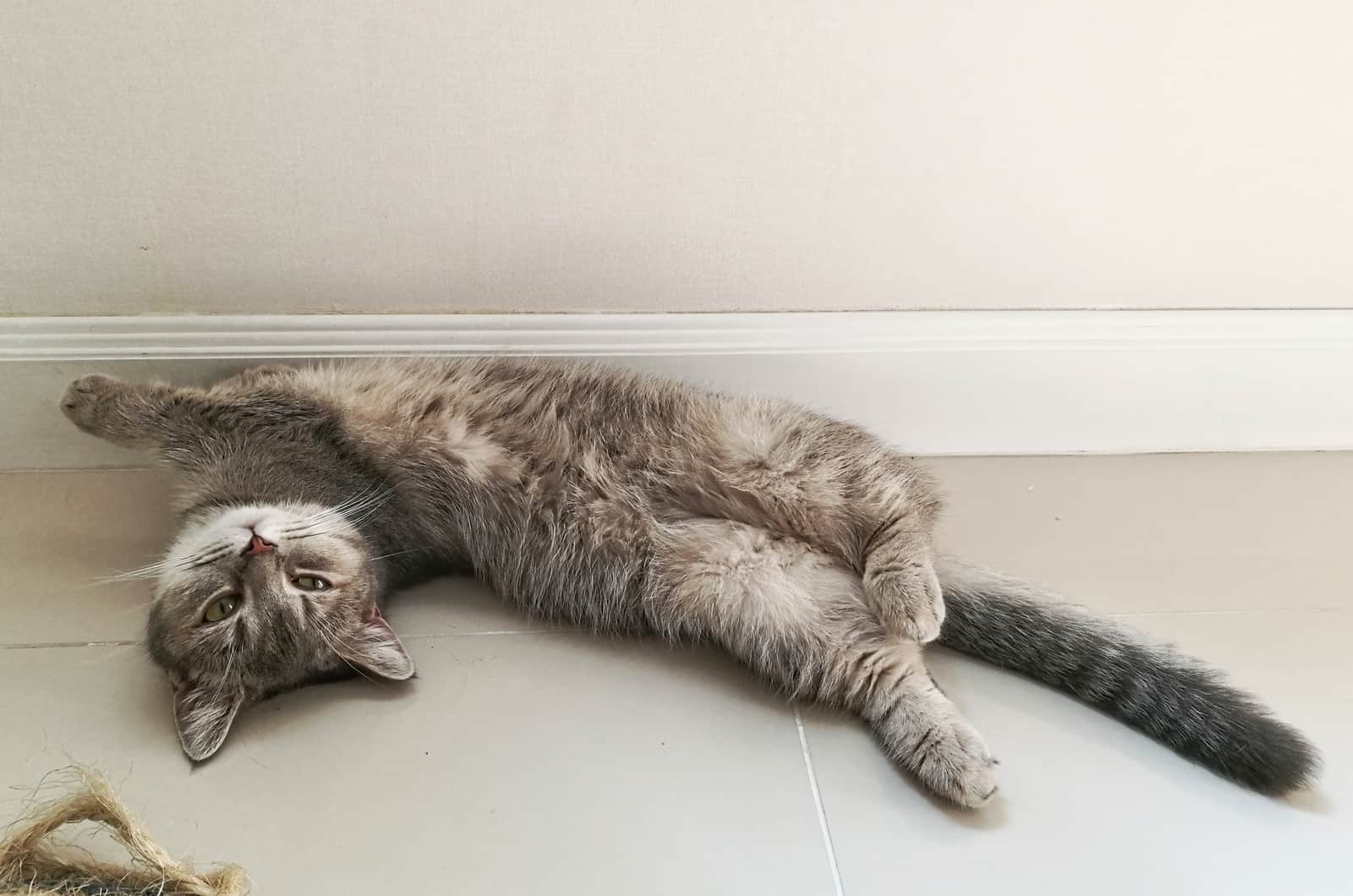
Although they have short coats, Munchkins aren’t hypoallergenic, which may confuse many cat lovers. Munchkin cats are extremely popular for their unusual look; their short legs are a result of a genetic mutation.
Still, these cats are very energetic, intelligent, and friendly which is why Munchkins are getting more popular. But, if you’re an allergy sufferer looking for a Munchkin cat to be your pet, I recommend you forget about it.
They produce a higher amount of protein Fel d1 which is usually found in the cat’s urine, saliva, dead hair, and similar. Still, some people believe that they’re not dangerous for people with mild allergies, only for people with extreme sensitivities.
However, I personally think that, if you desperately want a cat friend, you should choose one of the cat breeds that are considered hypoallergenic or the safest for people with allergies.
12. Turkish Van
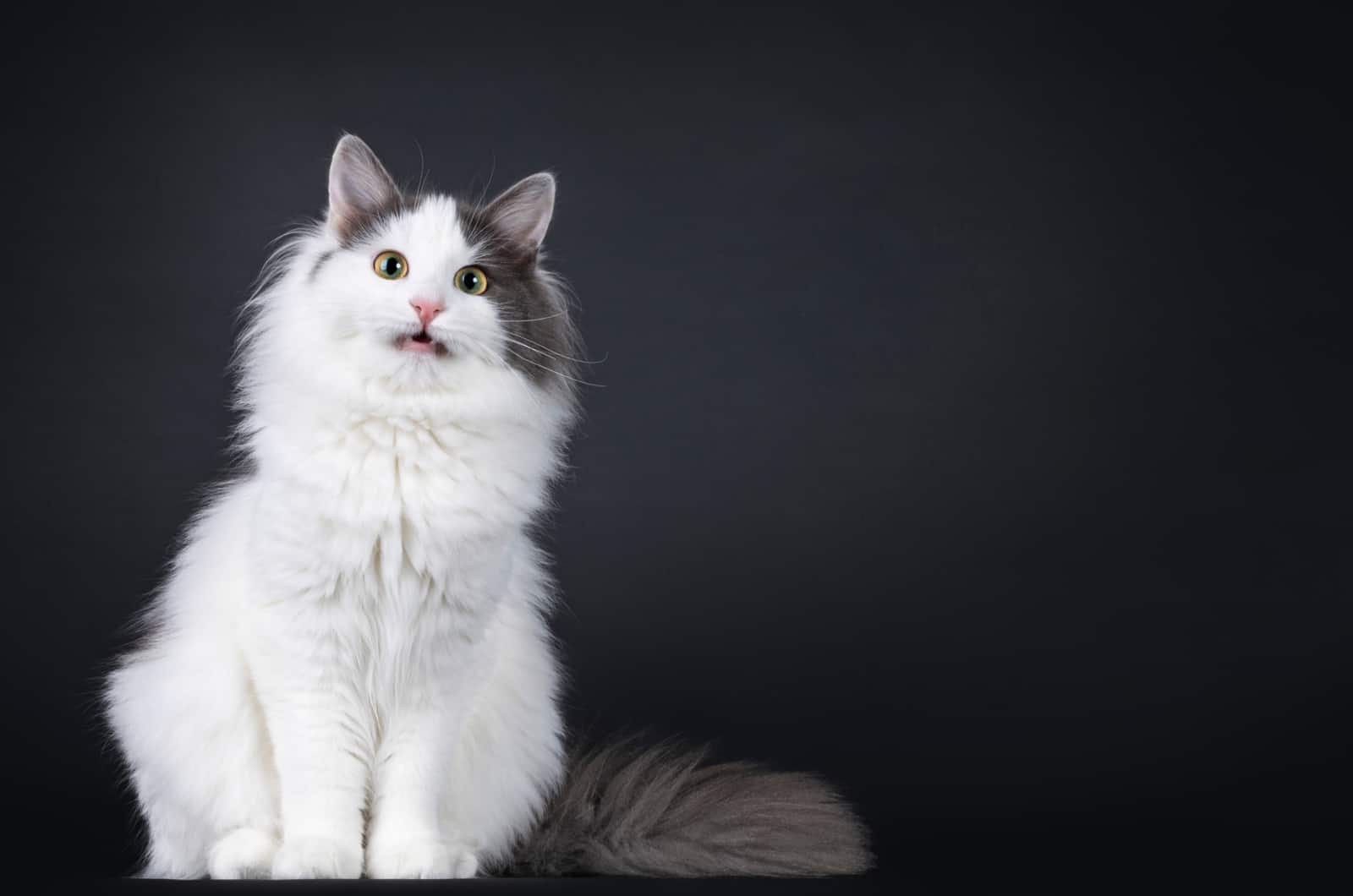
The gorgeous Turkish Van cats are famous for their long coat, which they groom all the time as they like to keep it fresh and clean. Moreover, this breed of cat is one of the rare breeds that adores water and swimming.
As these cats like to be clean all the time, that leads to the question – are Turkish Van cats safe for allergy sufferers? Unfortunately, they’re not the safest breed you can choose if you have cat allergies.
They produce a higher amount of protein Fel d1 and groom themselves often which means that they leave a lot of saliva on their hair. Moreover, when they shed they produce dander which later, along with saliva, forms into particles and contaminates the air, which can be very risky for an allergy sufferer.
Even though these beautiful felines are great family pets, people with sensitivities should avoid being in their company, or even worse, choosing them as their pet friend.
13. Scottish Fold Cat

The Scottish Fold cat is another interesting breed for both their appearance and their personality. These cats are popular for their folded ears, hence the name, and their big eyes.
When it comes to their personality, they’re simply one of the cutest cat breeds ever, mostly because they’re gentle, friendly, playful, and intelligent. People choose these kitties for their looks and because they can get along with everyone.
However, these cats aren’t safe for allergy sufferers. They don’t have very long coat, but their coat is very thick and tends to shed more. With the higher production of the protein Fel d1, there’s also a higher risk of allergic reactions.
Therefore, if you want to keep you and your family safe and live in an allergy-free home, this adorable kitten shouldn’t be your furry friend.
14. Turkish Angora

Just like their cousin the Turkish Van cat, the Turkish Angora is another breed that you should eliminate from your list if you have extreme sensitivities. In general, Turkish Angora cats are beautiful and great pets who get along with pretty much everyone.
However, when it comes to health, people with allergies should avoid this feline. The main reason for that is that they have a long and thick coat that usually sheds a lot, especially during the shedding season.
They also tend to produce a higher amount of protein Fel d1, which is the main problem. Usually, the Turkish Angora cat needs proper and regular grooming care, but a person with extreme sensitivities should never do that job as it might not be safe for them.
So, if you want to keep your allergies calm, you should find another breed of cat that will suit you better.
15. The Napoleon Cat

Have you ever heard of the Napoleon cat breed? If the answer is no, well, now is the time to meet it. The Napoleon is a unique cross between a Munchkin cat and a Persian cat.
Just like the parent breed, the Napoleon cat is a dwarf breed due to a genetic mutation. Luckily they don’t have faces as flat as Persians. These cats are very lovely, but if you have cat allergies, they might not be the best choice for your pet.
Considering that the Napoleon breed derives from two non-hypoallergenic cat breeds, this means that the Napoleon will not be safe for allergy sufferers.
They experience medium shedding but may produce higher amounts of protein Fel d1 than other felines. Therefore, if you want to reduce the risk of allergies, stay out of the Napoleon’s company.
16. York Chocolate Cat
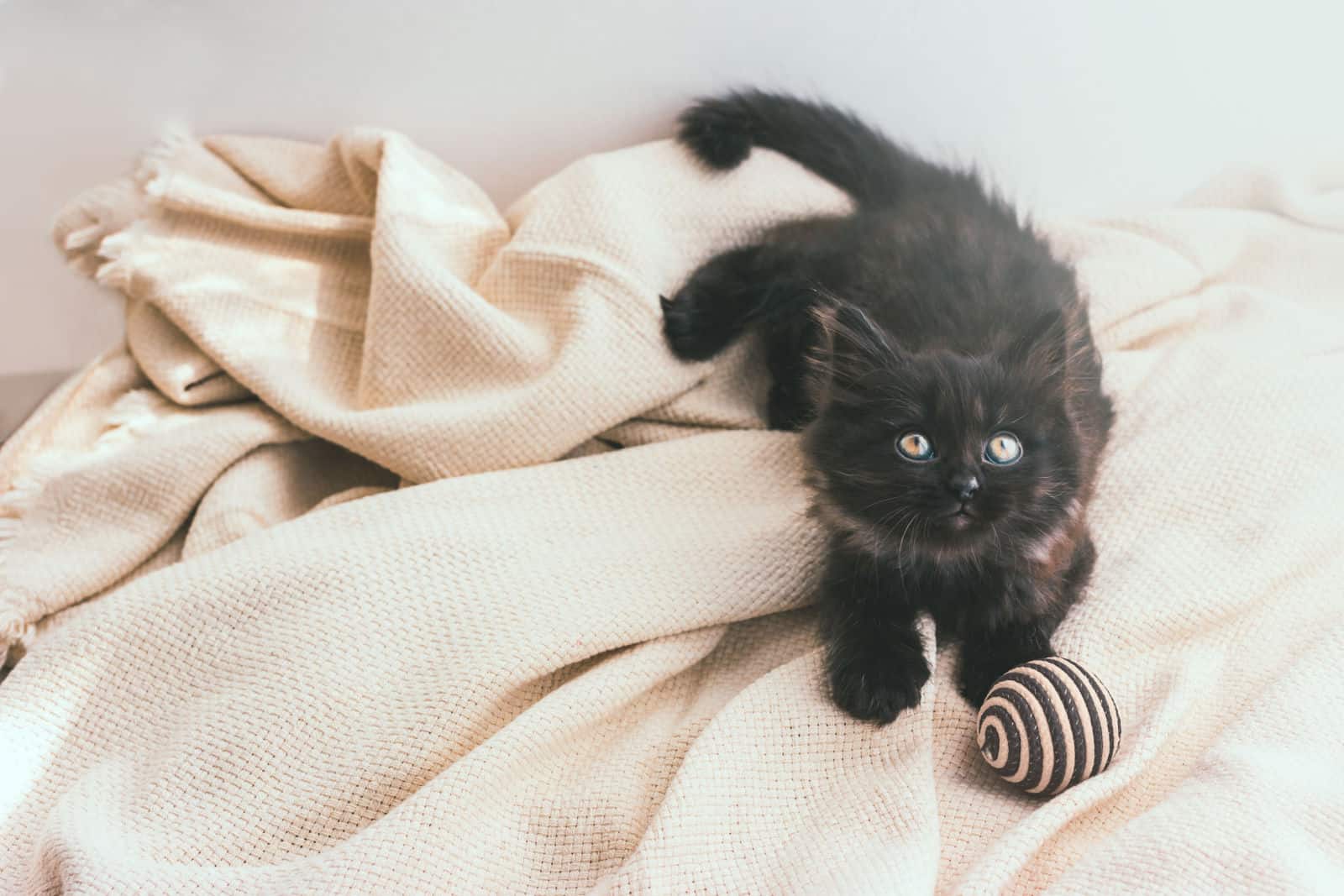
According to research, darker cats often produce higher amounts of protein Fel d1. The beautiful York Chocolate breed of cat isn’t the right choice for people with allergies.
These cats are beautiful. Their coat is in dark chocolate colors and they have green eyes. However, the York Chocolate cat also has medium-long fur which sheds a lot.
Therefore, considering their shedding level, and dark color, these cats are considered non-hypoallergenic. They lose a lot of hair, especially during the shedding season and it’s very hard to maintain such a cat and keep your environment allergen-free.
So, if you’re an allergy sufferer who’s looking for a pet cat, I suggest you forget about the York Chocolate breed, especially if you have extreme sensitivities.
17. Chartreux Cat
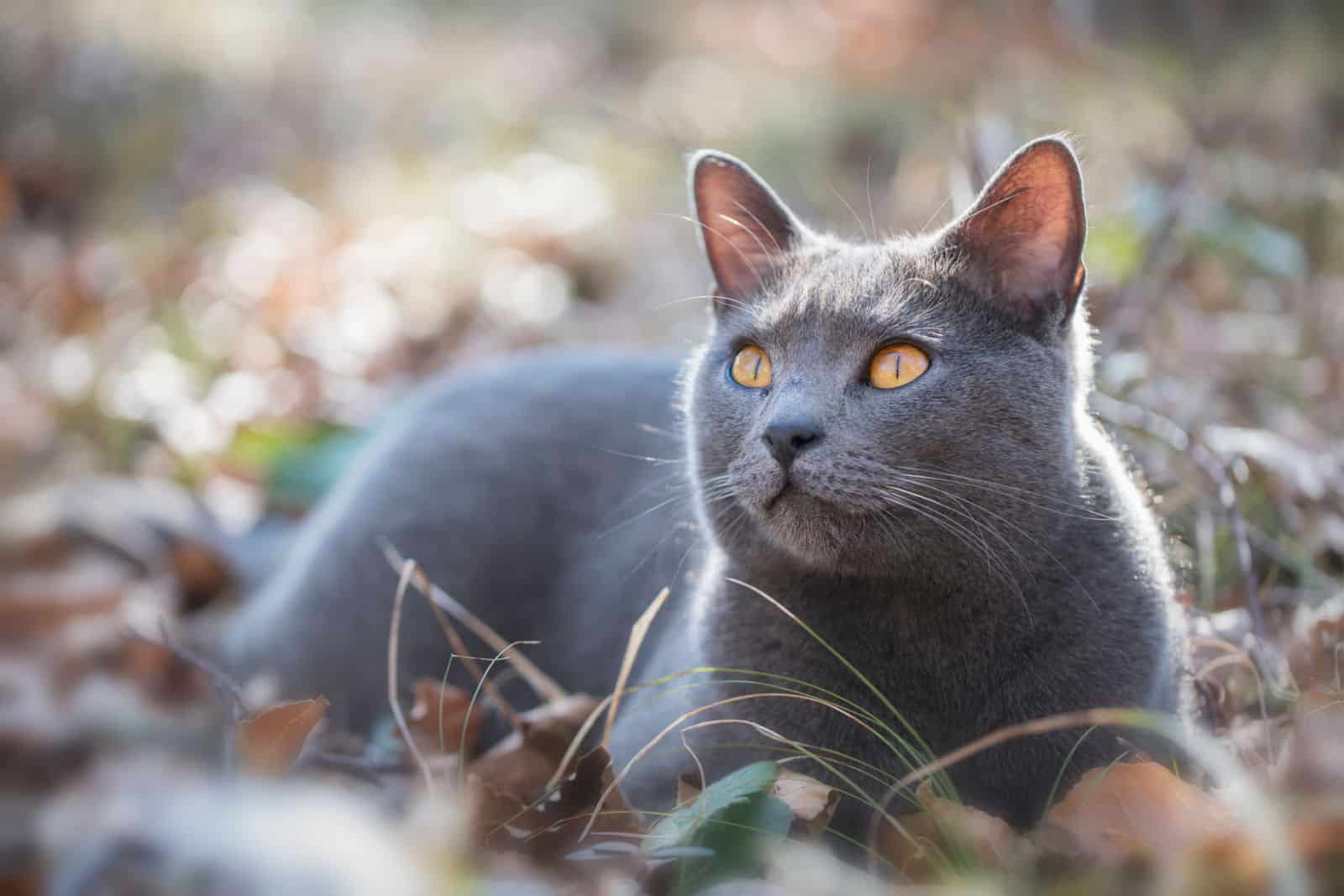
The Chartreux is one of my favorite breeds of cats. To me, they’re very similar to Russian Blues, but of course, there are certain differences. This feline, of French origin, is lovely and friendly.
They’re characterized by their gray-blue, wooly textured coats. It’s interesting that their coats are very thick and waterproof.
Moreover, they don’t have long hair, just a very dense coat, but still, such a coat requires special grooming care, especially during the shedding season. These cats are moderate shedders and produce a moderate amount of protein Fel d1.
Therefore, if you have mild allergies, these cats won’t necessarily trigger your allergic reaction. But, if you’re very sensitive, it would be best to avoid the possible risks and stay away from this beautiful breed.
18. Tonkinese Cat
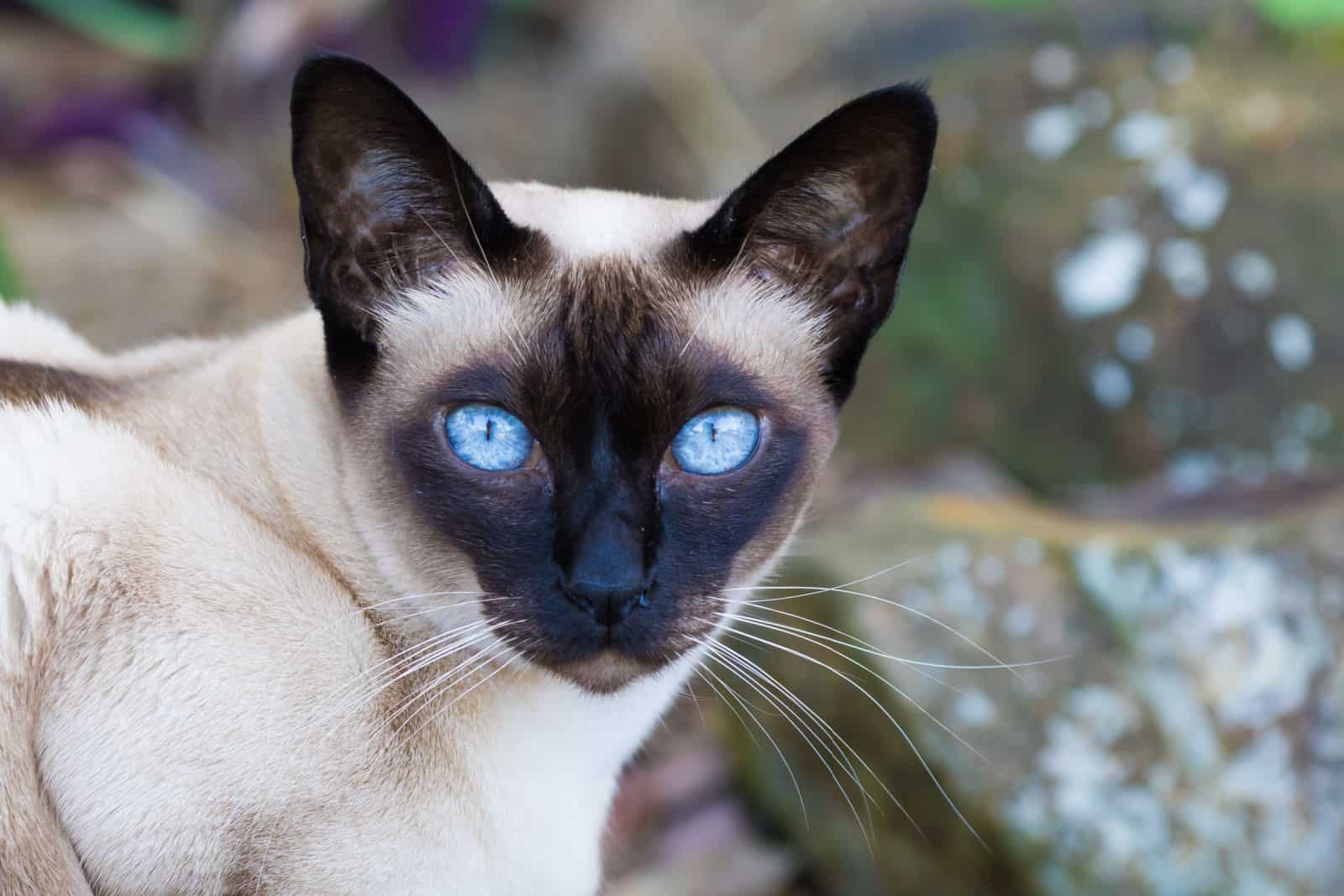
Another amazing breed is the beautiful Tonkinese cat. But, sadly for every allergy sufferer, this kitty is considered non-hypoallergenic, therefore it’s not a safe option for a pet.
This breed is actually a mix of Burmese and Siamese cats, which results in a beautiful-looking feline. Regardless of their personality type, Tonkinese cats are actually very good pets.
When it comes to their coat and grooming requirements, things are a bit more complicated. The Tonkinese cats have a thick coat that sheds moderately.
While these felines aren’t considered the worst for allergy sufferers, they produce higher amounts of protein Fel d1 than some other cats which increases the risk of sensitivities in allergy sufferers.
So, if you’re an allergy sufferer, or someone in your family is one, then this lovely feline shouldn’t be in your home, especially if you want to keep your environment allergen-free.
If you desperately want a new kitty, worry not, as I’m sure you’ll find yourself the perfect pet with whom you’ll be safe.
19. American Polydactyl
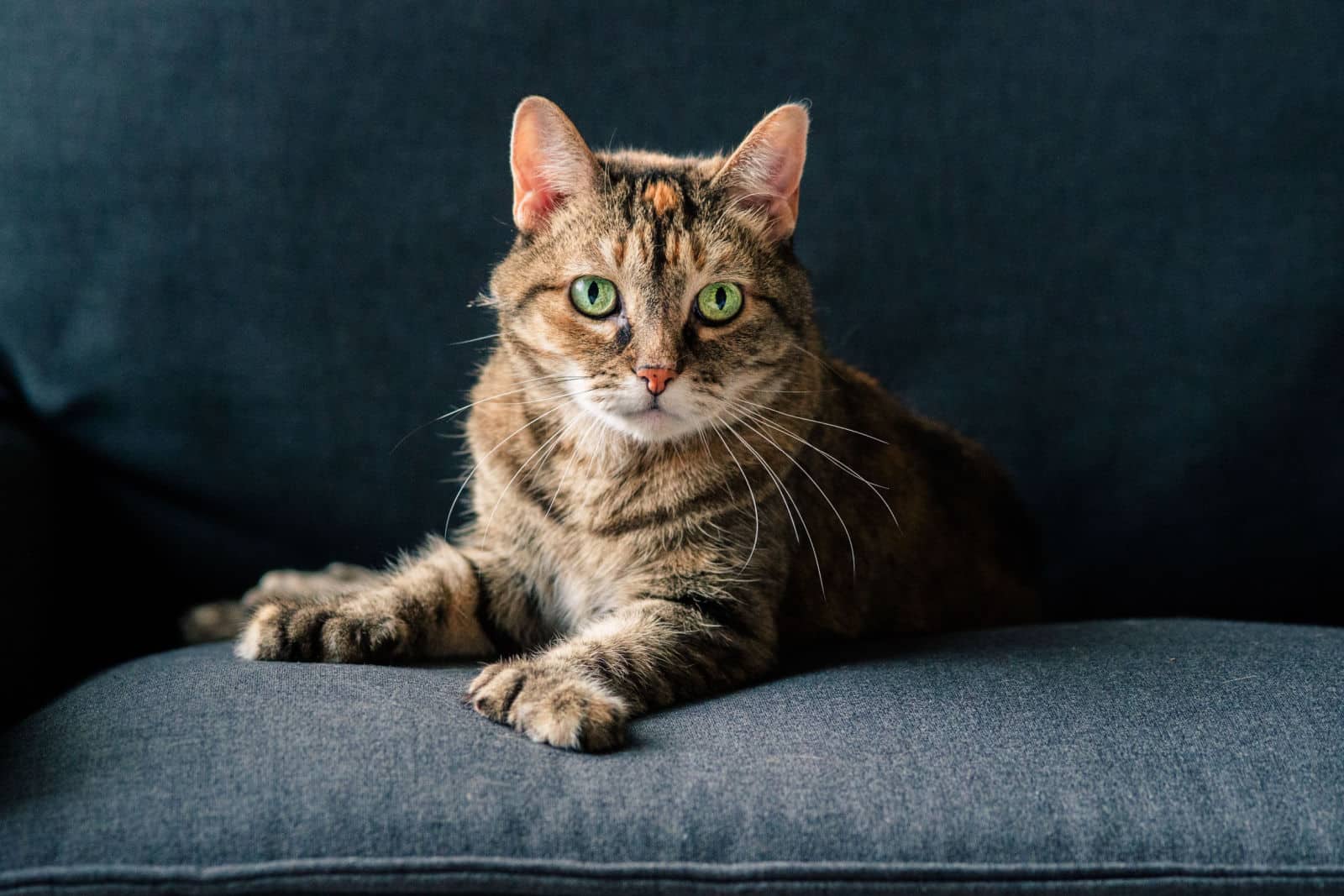
The American Polydactyl cat is one of the most special wild-looking felines. The polydactyl in their name refers to a genetic mutation where a cat is born with seven toes on each paw.
Because of that condition, they have gained a lot of popularity among cat lovers. However, if you are thinking about adopting this cat breed, simply forget about it if you’re an allergy sufferer.
The thing about these cats is that they shed a lot, no matter whether they’re short-haired or long-haired. Their coat requires special grooming care and they are high maintenance. Still, your home would be full of cat hair, which isn’t the safest thing for an allergy sufferer.
American Polydactyl cats need regular grooming to minimize their shedding and keep their coat in good condition. However, if you have cat allergies, this kitty will only cause you more problems with your allergies.
20. Longhaired Manx
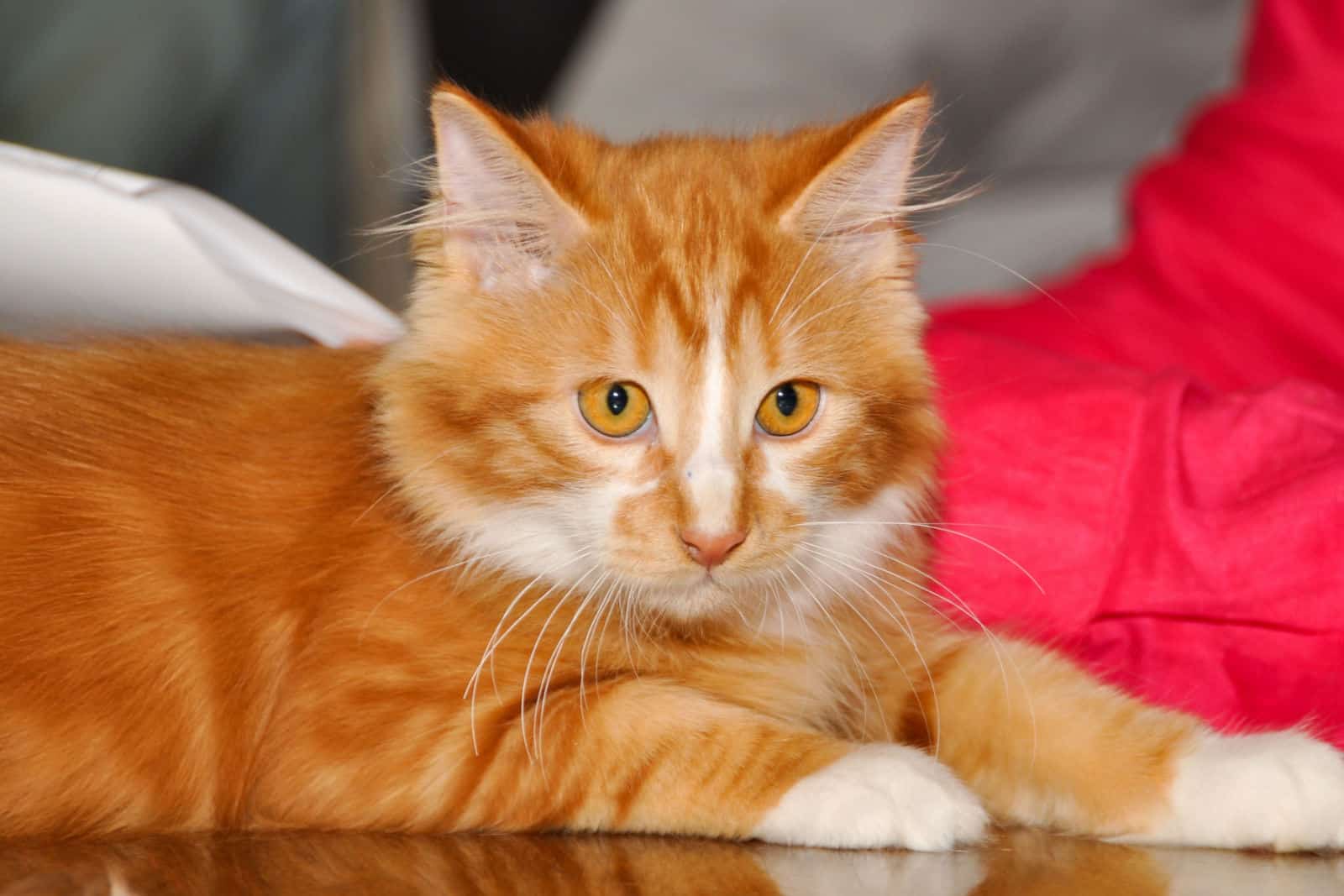
The Cymric cat, which is also known as the long-haired Manx is one of the most beautiful cat breeds, also known as the tailless breed. This breed of cat is a very lovely and unusual pet, but is it safe for people with extreme sensitivities, considering that it is long-haired?
Well, not really, but their long hair isn’t the main reason for that. These cats, like others from this list, produce a higher amount of protein Fel d1. This means that owning such a cat increases the risk of possible allergic reactions.
That can be very dangerous for people with severe allergies. The Cymric breed of cat has a heavy undercoat that sheds moderately and requires normal grooming care.
Some people say that they’re not risky for people with mild allergies, but everyone is different and you cannot predict whether this breed of cat will cause you allergies or not. If I were you, I’d rather find the kitty which I’m sure won’t cause me any issues with my allergies.
21. Kurilian Bobtail
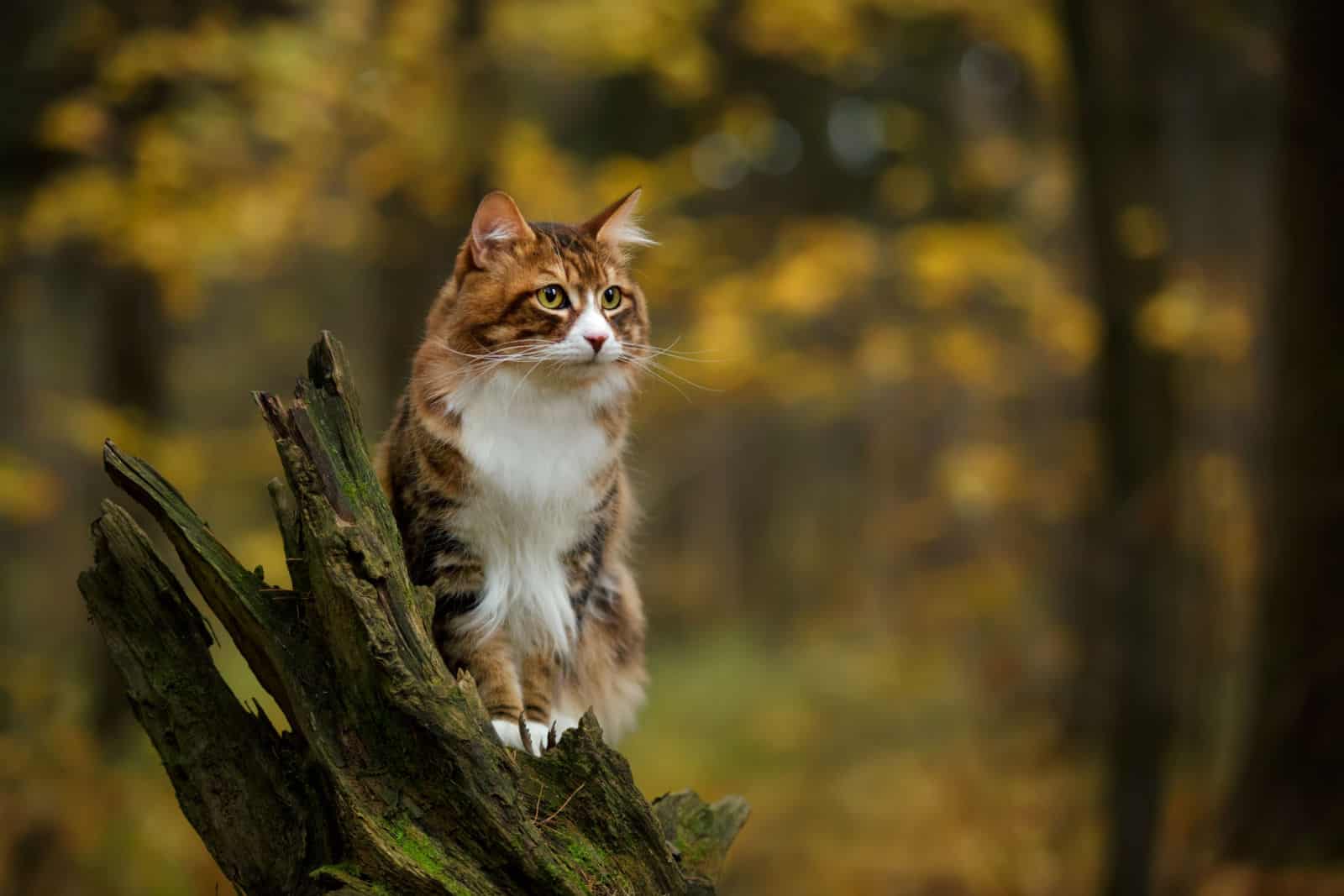
When it comes to the fascinating Bobtail breeds, one of them is considered one of the worst cats for allergies. This cat breed is known as the Kurilian Bobtail and it originated from the Kuril Islands, hence the name.
Even though they look fierce and exotic, these kitties are actually very lovely, friendly, and affectionate, which makes them great family pets. The Kurilian Bobtail cat may have either short or long hair, but regardless of coat length, they all shed a lot and require special grooming care.
Due to the higher amount of shedding and higher amount of protein Fel d1 that these cats produce, people with extreme sensitivities should avoid them at all costs. These cats need daily brushing to reduce dead and loose hair, which isn’t safe for allergy sufferers at all.
Owning such a cat would mean having a home full of cat hair, so even though they’re very sweet, don’t be disappointed as I will show you a list of even sweeter cats who are considered hypoallergenic!
Tips For Choosing A Hypoallergenic Cat Breed
If you’re an allergy sufferer looking for a feline friend, then here are some of the tips that might help you with your decision.
Of course, I will provide you with the list of the best cat breeds for people with cat allergies, but you should also pay attention to the following tips as they can decrease the risk of allergic reactions even more.
• Kittens produce a lower amount of protein Fel d1 than adult cats – of course, one day our kittens will grow up and mature. Unfortunately, they don’t stay kittens forever. However, if you plan to get a new feline friend, it would be best if you get a kitten, instead of an adult cat. Make sure that the specific breed of cat is completely safe for you and your allergies.
• Female cats produce lower amounts of protein Fel d1 than unneutered males – if you have cat allergies and cannot decide which cat you should choose, I recommend choosing one of the breeds from the list below, and choose a female cat as that will reduce the risk of possible allergic reactions even further.
• Unneutered male cats produce a similar amount of protein Fel d1 as female cats, which is lower than the amount produced by unneutered males. Therefore, if you desperately want a male cat, I would recommend you neuter it at a young age, in order to decrease the risk of triggering allergies.
I saved the best for last! Now that you have checked out these tips, check out the list of the best cat breeds for allergy sufferers. Do some research about these breeds and choose the one you like the most and that suits your lifestyle the best.
The Best Cat Breeds For Allergy Sufferers
| Russian Blue cat | Siamese cat |
| Ragdoll cat | Siberian cat |
| Bengal cat | Oriental Shorthair |
| Devon Rex | Javanese cat |
| Cornish Rex | Balinese cat |
| Sphynx cat | Calico cats |
In Conclusion
I hope that this article will help many cat lovers who are dealing with allergies. I didn’t want to leave you hanging so, besides providing you with the list of worst cats for allergies, I wanted to introduce you to the best cat breeds for allergy sufferers.
Although there are no 100% truly hypoallergenic cats, there are those that produce a lower amount of protein Fel d1 and shed less, making them safer for people with cat allergies. This is why some cats are considered hypoallergenic.
So, after reading this article, you’ll know which breeds you should avoid and how to choose the right cat that you’ll be safe with!
Related Content
• Do Hypoallergenic Black Cats Exist? Assessing 22 Cat Breeds

